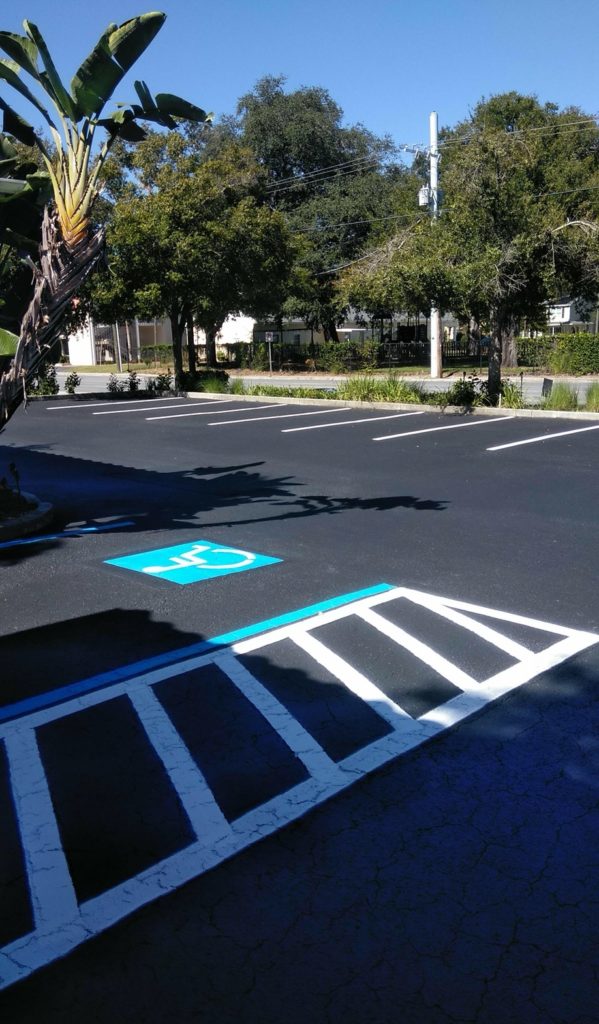Mastering Angled Parking: How Asphalt Sealing Improves Industrial Whole Lots
Mastering Angled Parking: How Asphalt Sealing Improves Industrial Whole Lots
Blog Article
Warm Mix Asphalt: A Lasting Remedy for Sidewalk
Warm Mix Asphalt (HMA) has actually become a leading lasting option for pavement services, providing a myriad of environmental benefits and innovative innovations. Its ability to lower and reuse materials energy consumption offers an engaging situation for its adoption in road building and construction tasks. The long-term performance and toughness of HMA make it a recommended choice for framework advancement. As the demand for environmentally friendly construction techniques expands, exploring the subtleties of HMA's sustainability can supply important insights right into the future of pavement remedies.
Ecological Advantages of Warm Mix Asphalt

Furthermore, Hot Mix Asphalt aids to reduce city warm island results. Its dark color soaks up sunshine, minimizing the quantity of heat mirrored back right into the environment contrasted to lighter-colored pavements. This can reduce ambient temperature levels in urban areas, lowering the need for a/c and inevitably reducing energy intake.
Furthermore, Hot Mix Asphalt adds to boosted stormwater monitoring. Its permeable nature allows water to infiltrate the pavement and charge groundwater products, lowering drainage and the threat of flooding. These ecological advantages make Warm Mix Asphalt a lasting selection for leading roadways and freeways.
Power Effectiveness in HMA Manufacturing
Is power effectiveness an important element in the production of Warm Mix Asphalt (HMA)? Energy plays a substantial function in the production of HMA, influencing both expense and environmental sustainability. One essential facet of energy efficiency in HMA manufacturing is the use of cozy mix asphalt (WMA) innovations.
In addition, advancements in plant innovations have actually led to more energy-efficient HMA production procedures. By optimizing power usage in HMA production, the market can minimize its carbon footprint while preserving high-grade pavement materials.
Recyclability of Warm Mix Asphalt
The recyclability of Warm Mix Asphalt (HMA) is a critical element of its sustainability and lasting environmental impact. HMA is among one of the most recycled products in the United States, with over 100 million lots of redeemed asphalt sidewalk (RAP) being recycled annually in new pavement building. Reusing HMA supplies numerous ecological benefits, such as reducing the need for virgin materials, reducing energy usage throughout manufacturing, and lowering the quantity of waste sent out to land fills.
The procedure of recycling HMA involves crushing the existing sidewalk, crushing it right into smaller sized pieces, and blending it with brand-new accumulation and asphalt binder to develop a recycled mix. In view it general, the recyclability of HMA plays a significant role in promoting lasting techniques within the pavement industry.

Long-Term Performance of HMA
Asphalt pavements demonstrate toughness and strength over an extensive duration, mirroring the lasting efficiency of Warm Mix Asphalt (HMA) The durability of HMA can be associated to its capability to stand up to hefty web traffic tons, severe weather condition conditions, and the effects of aging. Studies have actually revealed that properly designed and appropriately built HMA pavements can last for 20 years or even more with routine maintenance. The trick to making best use of the lasting efficiency of HMA lies in using high-quality products, adhering to finest practices in construction, and applying efficient maintenance strategies. Correct drain, routine examinations, and prompt repair work are essential for maintaining the structural integrity of HMA sidewalks in time. Additionally, innovations in HMA innovation, such as making use of polymer-modified binders and cozy mix asphalt, have better improved the durability and long life of HMA pavements. By focusing on quality building and construction and maintenance techniques, HMA remains to prove itself as a lasting and economical option for long-lasting sidewalk infrastructure.

HMA: Toughness and Sustainability
Demonstrating both durability and sustainability, Warm Mix Asphalt (HMA) has come to be a foundation in the building and construction of lasting sidewalk facilities - hot mix asphalt. HMA's toughness stems from its capacity to withstand hefty lots, severe climate conditions, and high traffic quantities, making it a trustworthy choice for roads, freeways, and airport paths. Discover More Here The make-up of HMA, which look at this site generally consists of aggregates, binder, and filler, plays a vital duty in enhancing its durability and resistance to tear and wear
Additionally, HMA's sustainability hinges on its recyclability and energy-efficient production process. The capability to recycle reclaimed asphalt pavement (RAP) in new HMA blends lowers the demand for virgin materials and reduces the ecological influence of pavement construction and maintenance. Furthermore, the power performance of generating HMA depends on its lower mixing temperatures compared to other pavement materials, causing lowered power consumption and greenhouse gas emissions.
Conclusion
In conclusion, warm mix asphalt (HMA) uses a sustainable solution for sidewalk with its ecologically pleasant attributes. HMA's recyclability, energy performance in manufacturing, and long-term durability make it a green option for roadway building.
HMA is one of the most recycled materials in the United States, with over 100 million bunches of recovered asphalt pavement (RAP) being recycled annually in brand-new pavement construction.The procedure of recycling HMA entails milling the existing sidewalk, crushing it right into smaller sized pieces, and blending it with new accumulation and asphalt binder to create a recycled mix.Asphalt sidewalks demonstrate toughness and resilience over an extensive period, showing the lasting performance of Warm Mix Asphalt (HMA) Additionally, improvements in HMA technology, such as the use of polymer-modified binders and cozy mix asphalt, have additionally enhanced the toughness and longevity of HMA pavements. The capacity to reuse recovered asphalt sidewalk (RAP) in new HMA mixes lowers the demand for virgin materials and lessens the ecological impact of pavement building and construction and maintenance.
Report this page